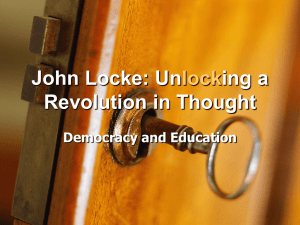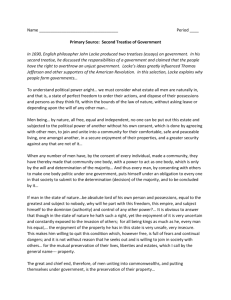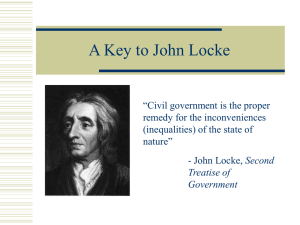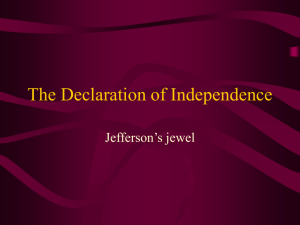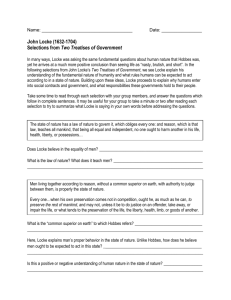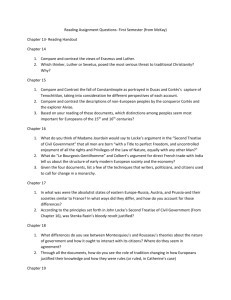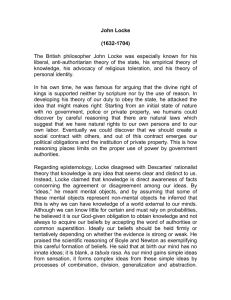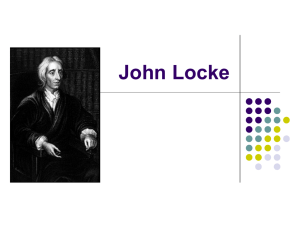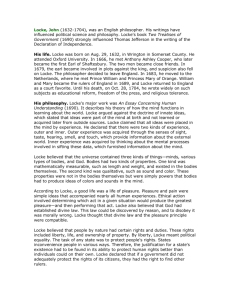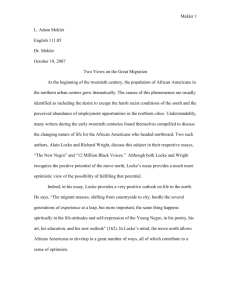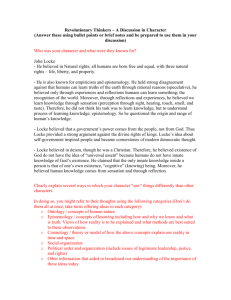Locke
advertisement
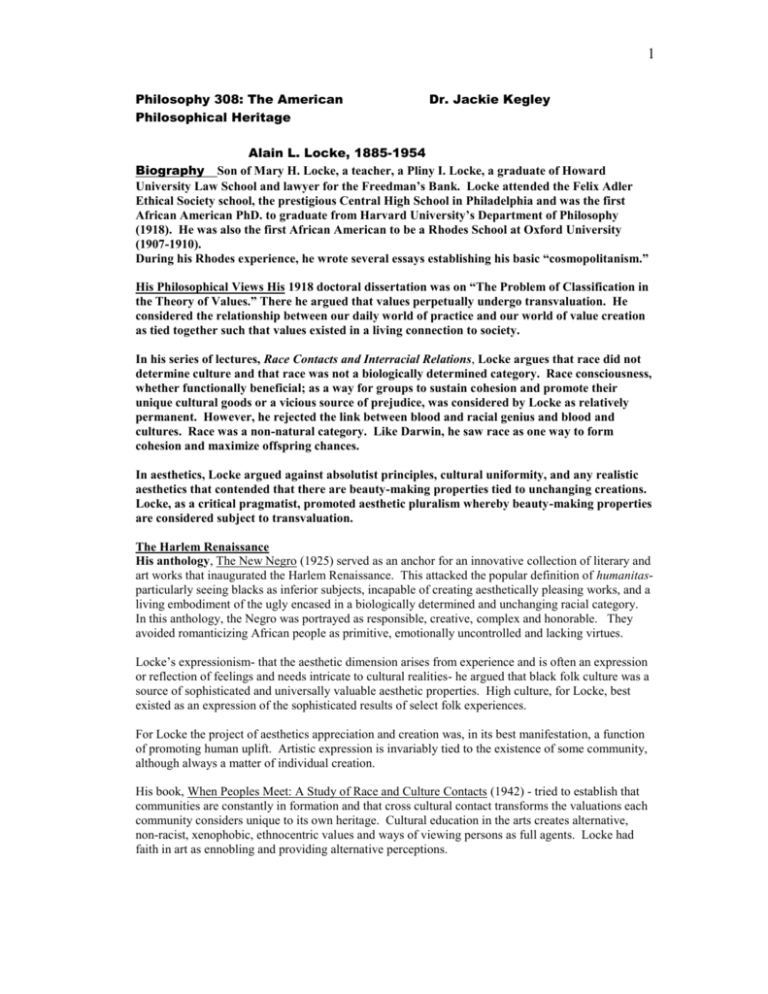
1 Philosophy 308: The American Philosophical Heritage Dr. Jackie Kegley Alain L. Locke, 1885-1954 Biography Son of Mary H. Locke, a teacher, a Pliny I. Locke, a graduate of Howard University Law School and lawyer for the Freedman’s Bank. Locke attended the Felix Adler Ethical Society school, the prestigious Central High School in Philadelphia and was the first African American PhD. to graduate from Harvard University’s Department of Philosophy (1918). He was also the first African American to be a Rhodes School at Oxford University (1907-1910). During his Rhodes experience, he wrote several essays establishing his basic “cosmopolitanism.” His Philosophical Views His 1918 doctoral dissertation was on “The Problem of Classification in the Theory of Values.” There he argued that values perpetually undergo transvaluation. He considered the relationship between our daily world of practice and our world of value creation as tied together such that values existed in a living connection to society. In his series of lectures, Race Contacts and Interracial Relations, Locke argues that race did not determine culture and that race was not a biologically determined category. Race consciousness, whether functionally beneficial; as a way for groups to sustain cohesion and promote their unique cultural goods or a vicious source of prejudice, was considered by Locke as relatively permanent. However, he rejected the link between blood and racial genius and blood and cultures. Race was a non-natural category. Like Darwin, he saw race as one way to form cohesion and maximize offspring chances. In aesthetics, Locke argued against absolutist principles, cultural uniformity, and any realistic aesthetics that contended that there are beauty-making properties tied to unchanging creations. Locke, as a critical pragmatist, promoted aesthetic pluralism whereby beauty-making properties are considered subject to transvaluation. The Harlem Renaissance His anthology, The New Negro (1925) served as an anchor for an innovative collection of literary and art works that inaugurated the Harlem Renaissance. This attacked the popular definition of humanitasparticularly seeing blacks as inferior subjects, incapable of creating aesthetically pleasing works, and a living embodiment of the ugly encased in a biologically determined and unchanging racial category. In this anthology, the Negro was portrayed as responsible, creative, complex and honorable. They avoided romanticizing African people as primitive, emotionally uncontrolled and lacking virtues. Locke’s expressionism- that the aesthetic dimension arises from experience and is often an expression or reflection of feelings and needs intricate to cultural realities- he argued that black folk culture was a source of sophisticated and universally valuable aesthetic properties. High culture, for Locke, best existed as an expression of the sophisticated results of select folk experiences. For Locke the project of aesthetics appreciation and creation was, in its best manifestation, a function of promoting human uplift. Artistic expression is invariably tied to the existence of some community, although always a matter of individual creation. His book, When Peoples Meet: A Study of Race and Culture Contacts (1942) - tried to establish that communities are constantly in formation and that cross cultural contact transforms the valuations each community considers unique to its own heritage. Cultural education in the arts creates alternative, non-racist, xenophobic, ethnocentric values and ways of viewing persons as full agents. Locke had faith in art as ennobling and providing alternative perceptions.
